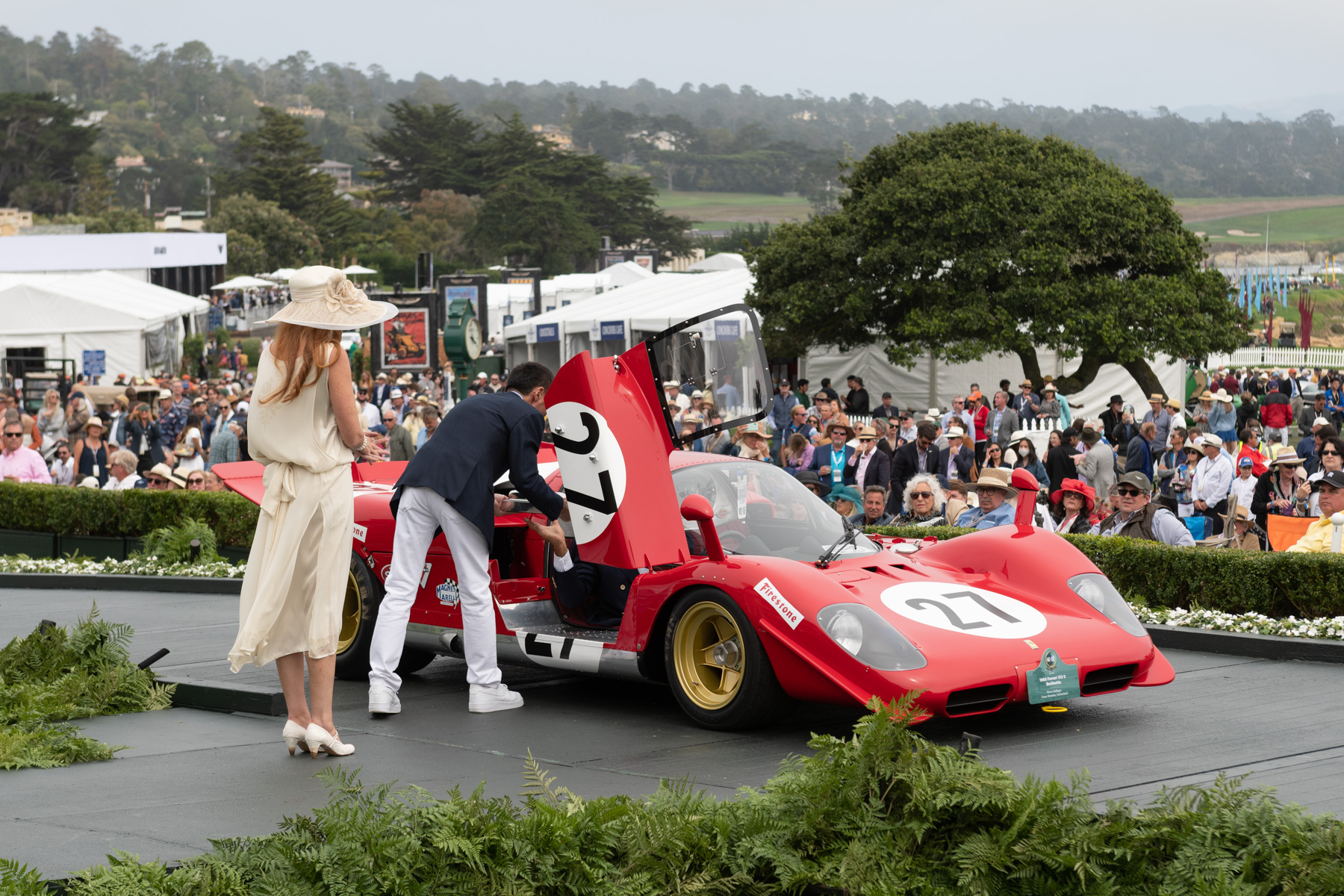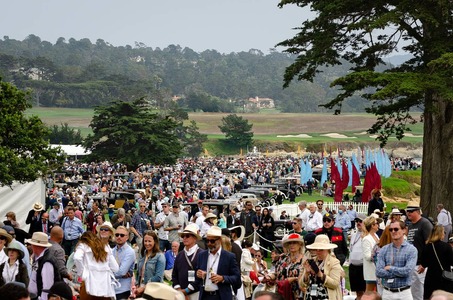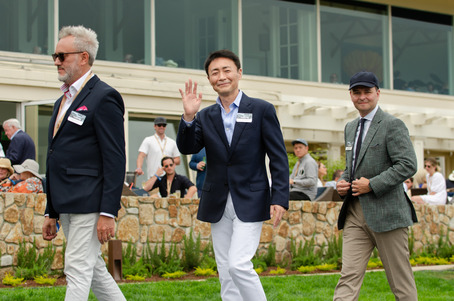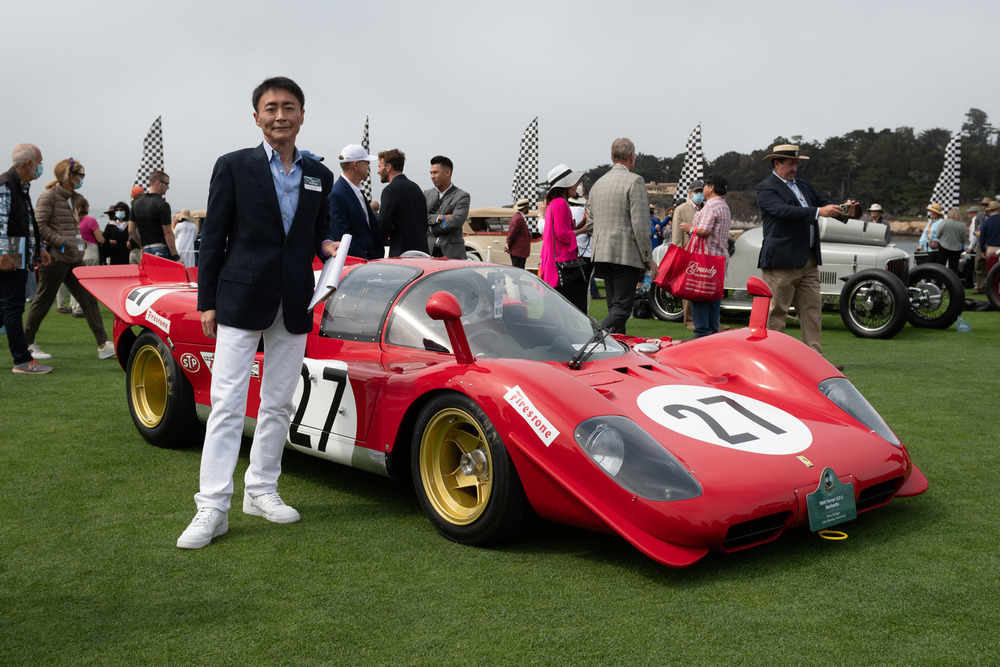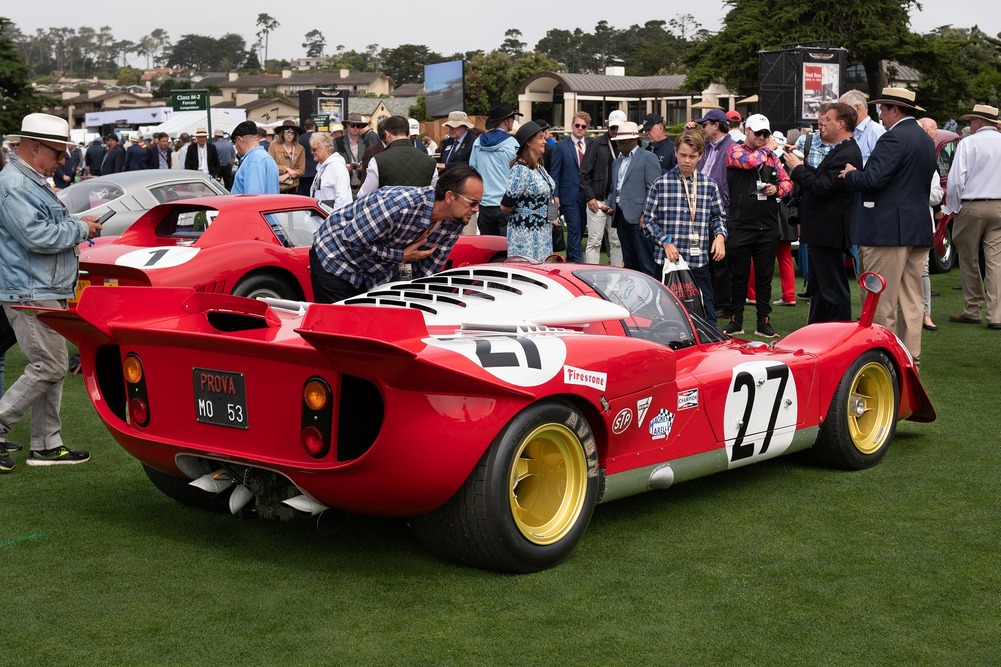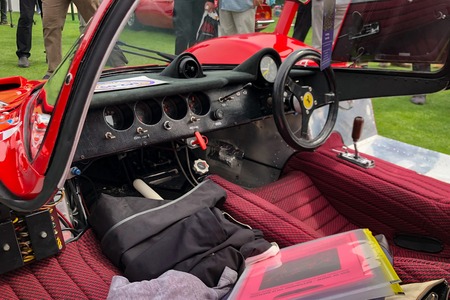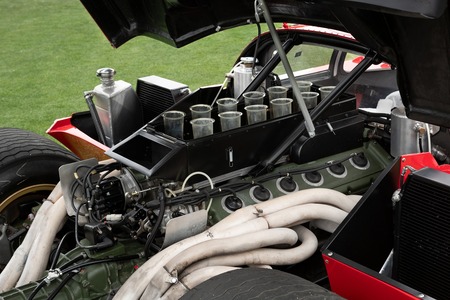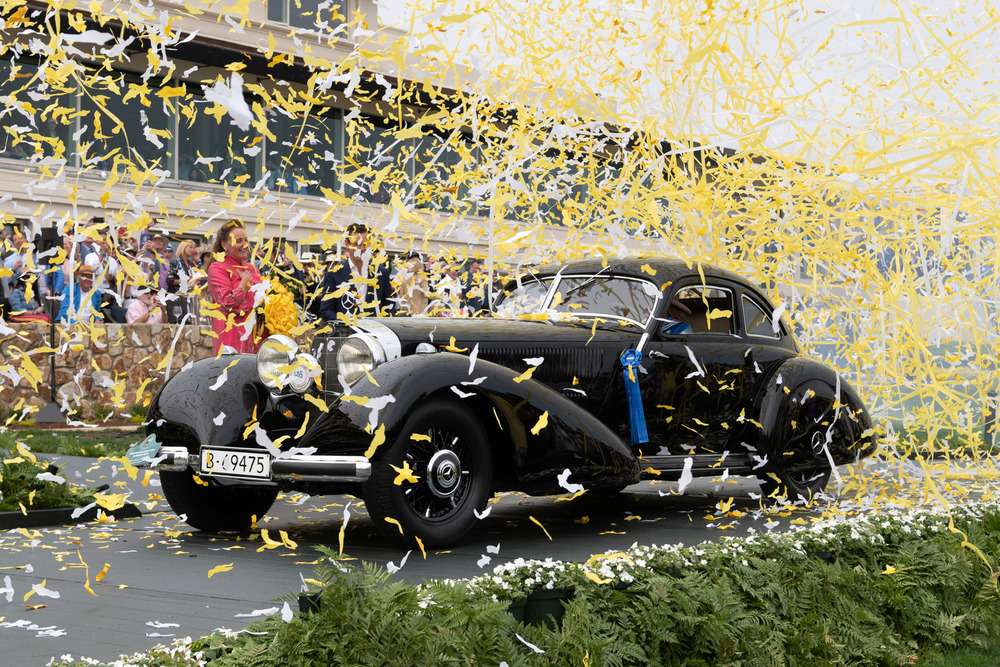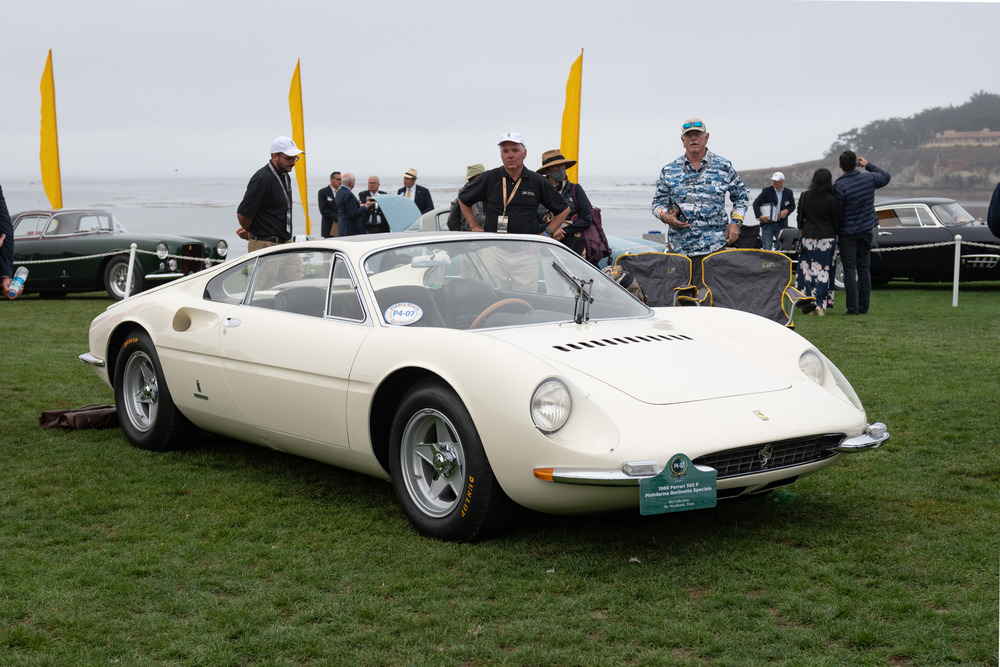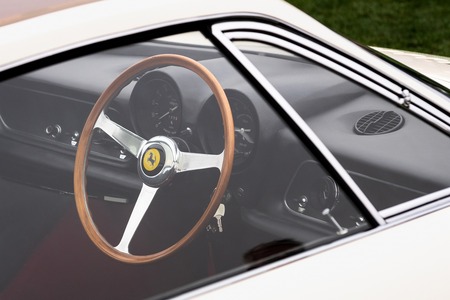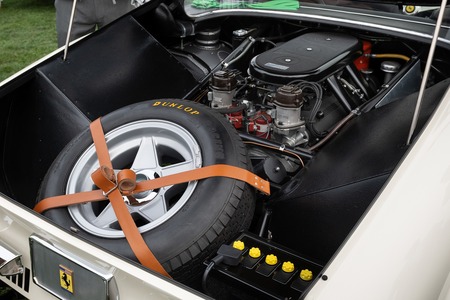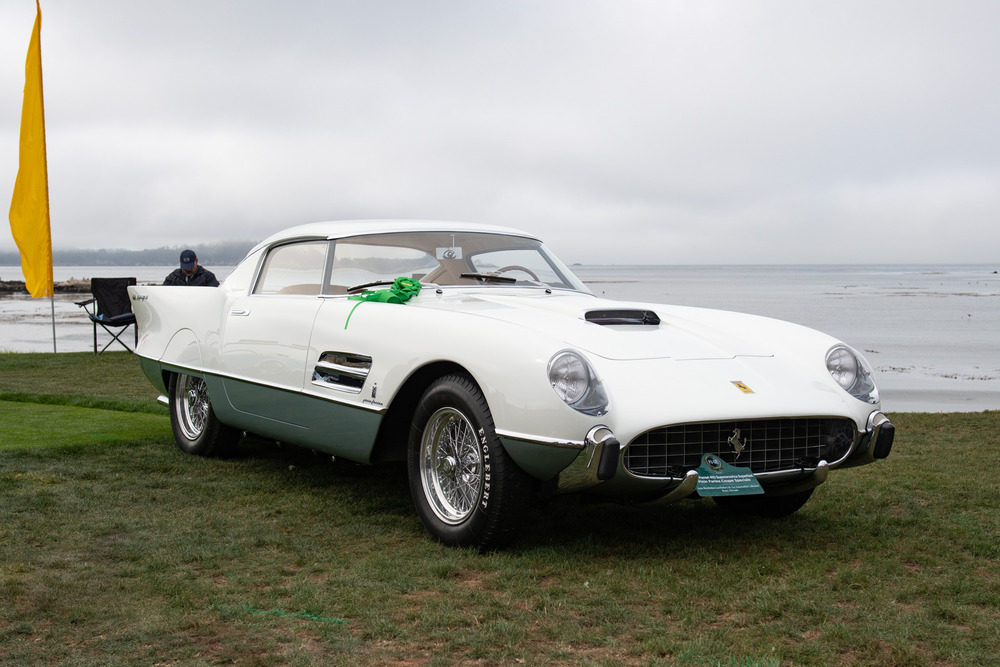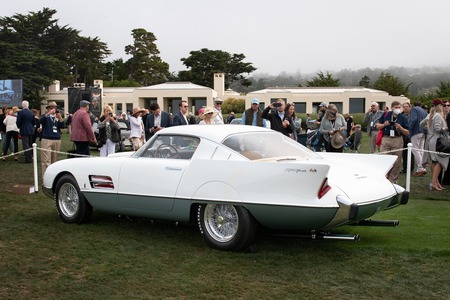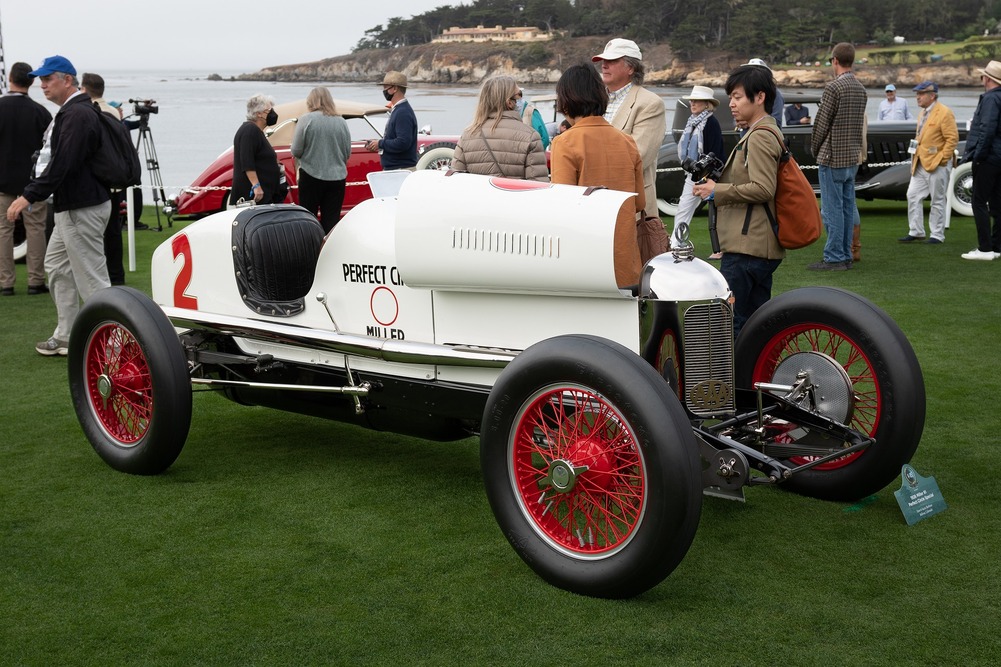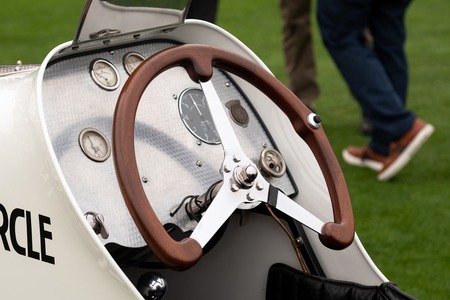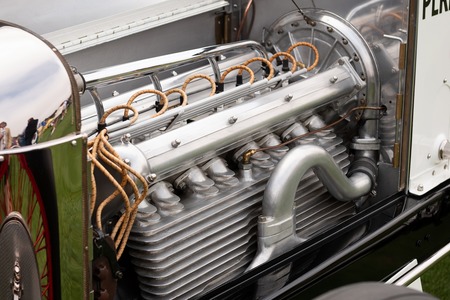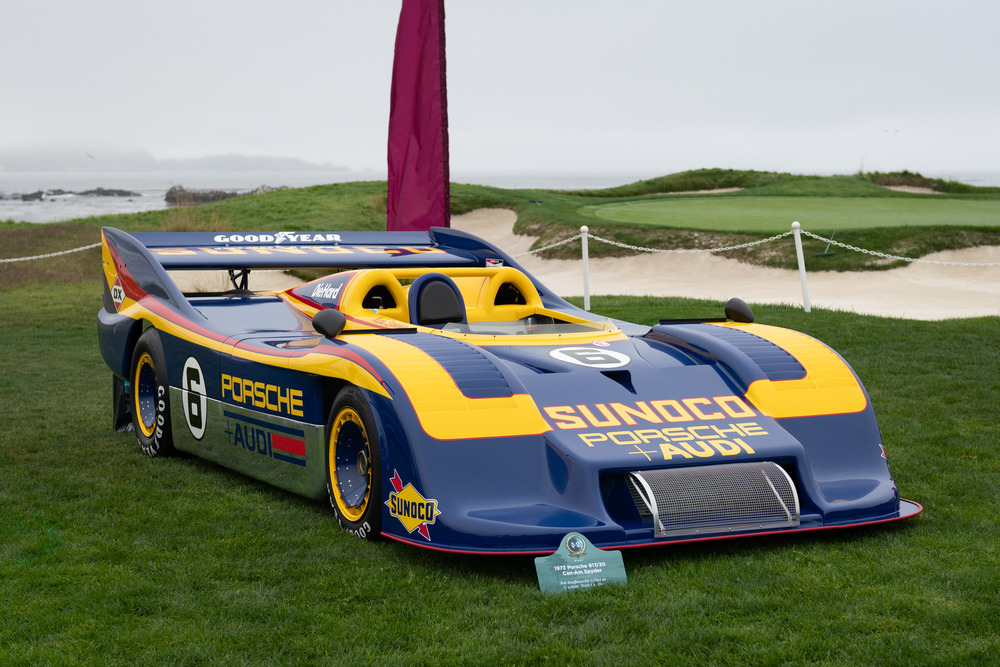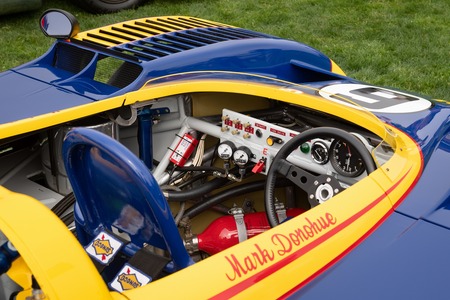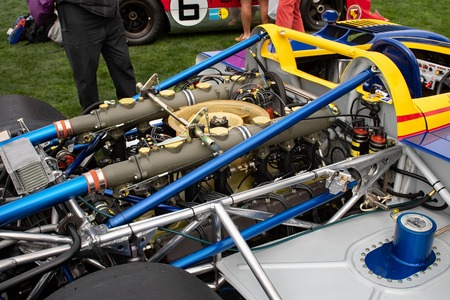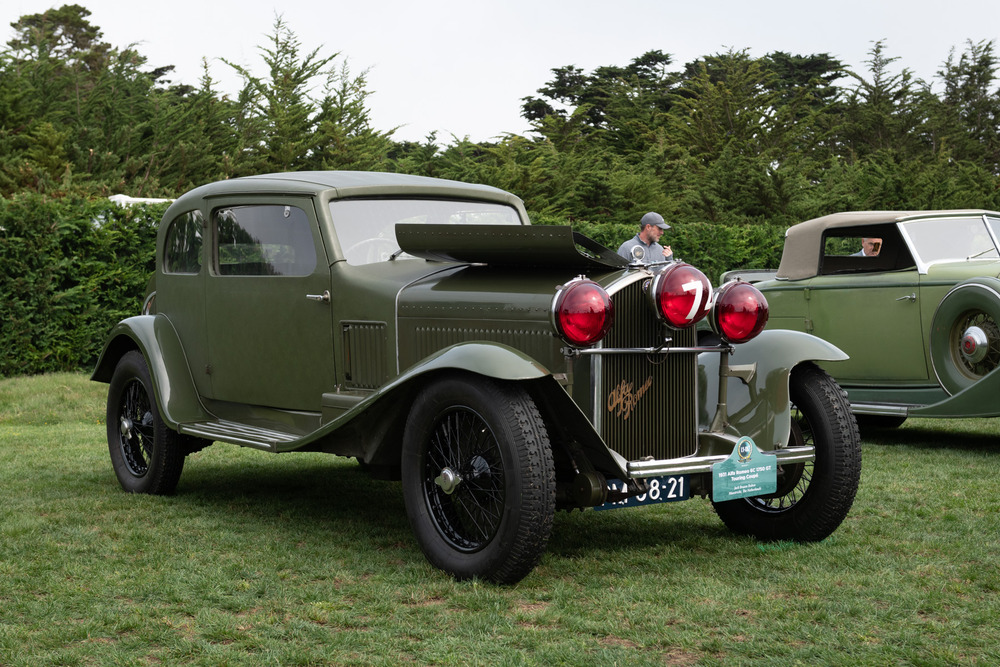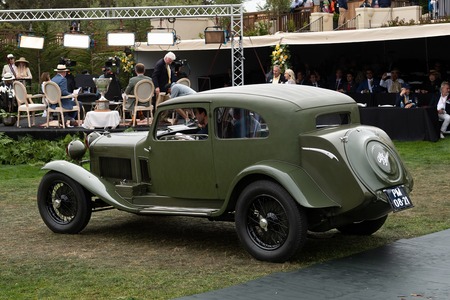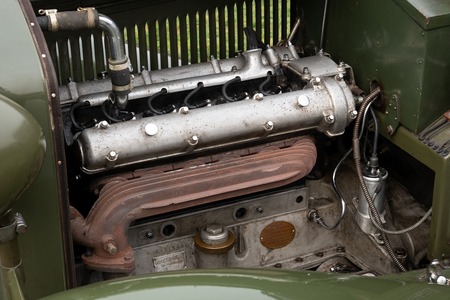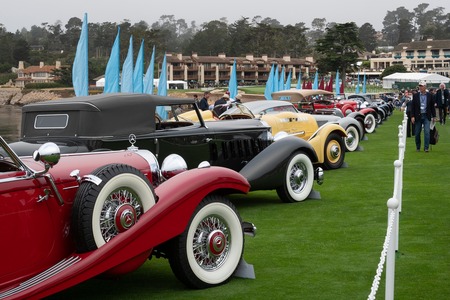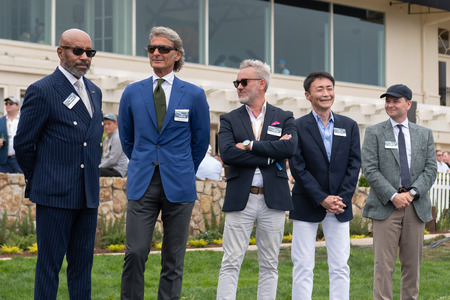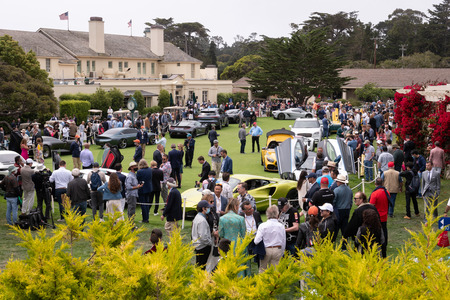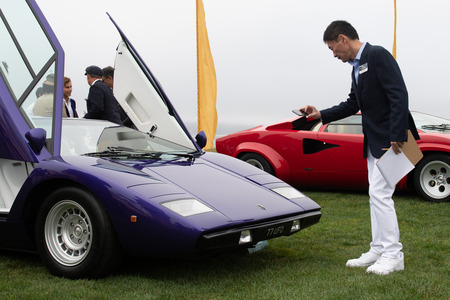The 2021 Pebble Beach Gran Turismo Trophy Goes to the 1969 Ferrari 512S, Featured in the Movie "Le Mans!"
The 1969 Ferrari 512S was awarded the Gran Turismo Trophy at the 70th Pebble Beach Concours d’Elegance. Selected by Gran Turismo series producer Kazunori Yamauchi, the car was once owned by Steve McQueen and appeared in the movie "Le Mans" starring the legendary actor.
The Ferrari 512S was a Group 5 racecar developed by Ferrari to compete in the International Championship for Makes. Rumor has it that it took Ferrari only three months to develop the machine. Powering the 512S is a 550-hp 5.0-liter V-12 designed by Franco Rocci.
Ferrari competed in sports-car racing in the late 60s with the famed 330P4, but with regulation changes to engine displacement, the P4 was quickly replaced by the 512S. Under the smooth, flowing aluminum body of the 512S is a steel pipe space-frame. The car also features plastic materials on the body surface, which were sued by Ferrari for the very first time.
The 512S had many famous battles with the Porsche 917 in 1970, and it became a force to be reckoned with that year, taking 3rd in the 24 Hours of Daytona and winning the 12 Hours of Sebring.
This Ferrari 512S is scheduled to make its debut in a future edition of Gran Turismo. And, in case you were wondering, the Best of Show prize at the Pebble Beach Concours d'Elegance went to the 1938 Mercedes Benz 540K Autobahn Kurier.
Below are the selection of cars nominated for the Gran Turismo Trophy this year as described by world renowned car designer Hideo Kodama.
Ferrari 365P (1966)
This is a sensational model that was presented by Pininfarina in the 1966 Paris Salon. The 365P is a Berlinetta with a mid-mounted 4.4-liter V-12 race engine. Perhaps it had a role in convincing Enzo, who was fixated on the conventional front-engine/rear-wheel-drive layout, at the time to go with mid-engine layouts in the future?
Its most notable feature is the three-person cabin where the driver sits in the center of the car. It served as inspiration for the Matra Simca Bagheera (1974) and the McLaren F1 (1993) in later years. As a side note, this layout was already tested in a 1936 Panhard Dynamic Sedan earlier.
This particular car was a showstopper in both London and Los Angeles, and was eventually purchased by an American collector. It is said that Gianni Agnelli of Fiat also ordered one for himself. I’m sure Agnelli, who was a well-known playboy, had beautiful women seated on both sides when he drove this car.
The design theme is also common with the Dino 206 of this era. Its volume and grace is incredible.
Ferrari 410 Super America Superfast (1956)
The 410 Super America was a Pininfarina model that made its debut at the 1956 Brussels Motor Show, marking the transition from the 357 to the high performance 410 series. In terms of styling, it is on the same path as the previous model. For example the air intake on the front end was enlarged more than necessary, resulting in a not-so-effective design.
For the Superfast, however; the nose was shaped low, and the intake was integrated very nicely into it. There are also many details that would be incorporated into later designs, such as the color differentiation between the horizontal line across the center and the main body, the cantilever-type structure that removes the A-pillar and distributes the stress to the sail panel, and so on.
Perhaps the then-popular American-style tail fins might have been a bit too much, I feel. The later Superfasts that appeared after this model maintained some of the motifs while toning down the overall design, so the value of innovations in this model can be said to be very high.
Miller 91 (1926)
The first thing that comes to mind when you hear the name Miller is the race machine that had an elaborate front-wheel-drive layout, which are rare in America. The hero of the story is Harry Miller, a racecar constructor who introduced many free and unrestrained ideas until he partnered with Offenhouser between 1910 and WWII.
Miller continued to make a variety of creations from FWD, 4WD, Superchargers and independent suspensions. There is also a record breaker shaped completely like an egg based on a 1917 Delage. Even across the Atlantic in Europe, Ettore Bugatti took note of his accomplishments.
This model here is unfortunately not front-wheel drive, but it is characteristic of Miller cars for its great balance. It was driven to victory by Frank Lockhart in the 1926 Indy 400-mile race.
You can really sense the beauty and intelligence of a no-nonsense engineer, a common theme among Miller-made machines.
Porsche 917/30 (1973)
The Porsche team in Weissach, led by F. Piëch, created the more competitive 917 based on the 908, aiming to defeat the Ferrari 512 and Ford GT40 in the 24 hours of Le Mans. While it did not produce satisfactory results in its first race, it won in 1970 and 1971. Porsche wanted to extend its popularity in North America, and the machine they entered into the CAN-AM Series was the 917/10.
This 917/10 was further improved in the form of the 917/30 and given to the Roger Penske's race team. Penske had established a sponsorship deal with SUNOCO, and entered two cars painted in the brand's iconic blue color.
While the car basically retains the mechanism of the original 917, it was given a huge rear spoiler and major changes were made to the aerodynamic devices on the front end to control the massive power of the twin turbos. As a result, it looks completely different than the original 917.
Alfa Romeo 6C1750 GT (1931)
From the beginning of the 1920’s, Vittorio Jano achieved many excellent results in racing with cars like the Alfa Romeo P2. The next compact machine he worked on was the 6C1500, which made its debut at the 1925 Milan Show. This car here at the Concours is the 1750cc 55-hp version, known for its advancements and evolution. It has the Touring body customized for the Mille Miglia race, and is very different in style than the graceful open bodied Flying Star 2-seater that it is related to.
Spec wise, from behind the cowling, it was constructed using the Weymann method of using artificial waterproof fabric for the body. This is also where the Superleggera method that becomes the patent of Touring started.
The radiator stands straight up rather than at an angle. The extra driving lamp and the rear quarter windows are sometimes omitted to lose weight, and it gives off an aura of a serious working machine. This car has not been touched in a long time, so it is in well-preserved condition.
Car Description Assistance: Hideo Kodama
Photos: John Hietter

